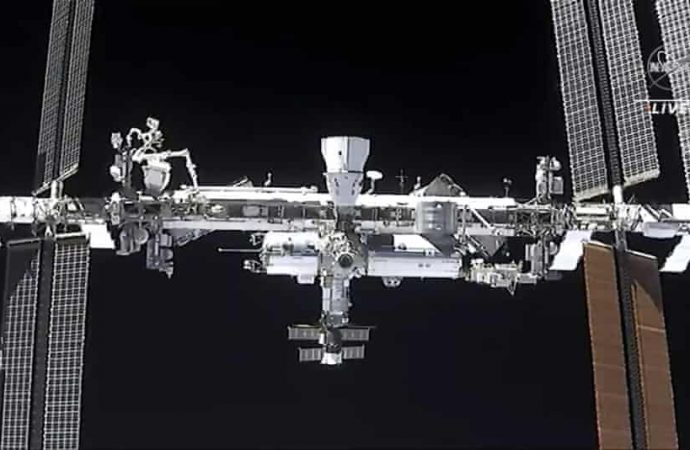‘Lucky strike’ did not endanger seven astronauts on board
Source: The Guardian
The sudden appearance of a small hole in a robotic arm aboard the international space station (ISS) has brought renewed attention to the danger posed by space junk.
Mission managers discovered the puncture during an inspection of the exterior of the spacecraft on 12 May. The Canadian space agency (CSA), which operates the arm, described it as a “lucky strike” that did not affect operations or endanger the seven astronauts in orbit aboard the station.
It is not known what kind of object struck the space station or when it happened. But analysts say the incident is a reminder of the proliferating amount of junk circling Earth and the risk that poses as launches and satellites in orbit increase.
“There’s a lot of stuff out there traveling at over 17,500mph and obviously it can do a lot of damage,” John Crassidis, SUNY distinguished professor of mechanical and aerospace engineering at the University of Buffalo, told the Guardian.
“This one didn’t do any real damage, it went through some insulation and we don’t even know if it hit part of the arm. [But] it’s some pretty scary stuff. The biggest thing we worry about is the astronauts, they’re very exposed out there, and some day it’s going to be a question of when, not if.”
The object that struck the space station would have been too small to be tracked, Crassidis said. Larger pieces of debris are monitored. Nasa says there are currently more than 27,000 larger than an average-sized cellphone in lower Earth orbit.
Space junk is classified as any kind of machinery or debris left by humans in space, and can include anything from flecks of paint to the remnants of China’s biggest rocket, which crashed into the Indian Ocean last month.
According to Nasa, “millimeter-sized orbital debris represents the highest mission-ending risk to most robotic spacecraft operating in low Earth orbit”. The agency notes that several windows in its now-retired space shuttle fleet had to be replaced after collisions with paint flecks.
The ISS, and most satellites in orbit, have hypervelocity impact protection such as Whipple shield technology, which was introduced in the 1940s. But the shields are only truly effective against smaller objects.
In 2009, a defunct Russian spacecraft collided with and destroyed a US commercial satellite, adding 2,300 pieces of large, trackable debris and many more smaller debris to the inventory of space junk, Nasa says.
“It’s estimated that between 1cm and 10cm there’s about 990,000 objects, and from 1mm to 1cm there could be upwards to about 120m,” Crassidis said.
Last year Nasa, in partnership with private contractor SpaceX, resumed human spaceflight from US soil after a decade. Elon Musk’s company has embarked on an intense schedule of launches to place thousands of Starlink broadband internet satellites in orbit.
With Russia, India, China and the European Space Agency possessing their own ambitious programs, the potential for more pieces of rockets, spacecraft casings and other objects to enter orbit as space debris has never been higher.
“It sounds easy, don’t put more space junk up there, but not everybody follows it,” Crassidis said, noting that the most recent global agreement on space debris mitigation came from the United Nations in 2010.
“Obviously the more stuff you put up there the bigger the problem becomes.”
Source: The Guardian

































Leave a Comment
You must be logged in to post a comment.